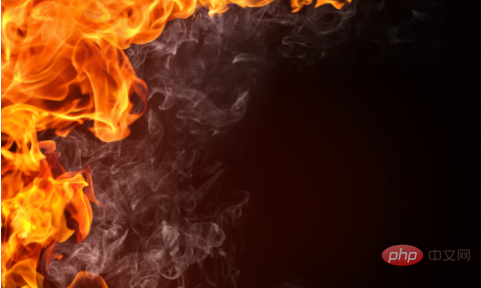Home >Technology peripherals >AI >New protection built with AI: Protecting humans from wildfires
New protection built with AI: Protecting humans from wildfires
- 王林forward
- 2023-05-10 21:46:041016browse

In 2022, wildfire disasters occurred frequently in the United States, and natural disasters have become the collective memory of the people during this year.
The horrific number and scale of wildfires this summer also raises the question, will fires become the new normal? What impact will it have on residents' health? And what steps should we take to minimize potential fires in the coming years?
Wildfires may seem random, but a combination of technology and artificial intelligence (AI) is helping us predict their spread and mitigate the devastating damage they can cause.
Researchers at Stanford University recently developed an AI model that can predict dangerous particle pollution and track the spread of the scorching fires in the American West.
Using satellite data, the Stanford team trained a machine learning model that can accurately predict PM2.5 concentrations caused by wildfire smoke in unmonitored areas.
The results show that in the past decade, the number of Americans suffering health damage from PM2.5 due to direct exposure to wildfire smoke has increased 27 times.
HEAVY.AI product manager Dr. Mike Flaxman said that AI and machine learning are helping researchers "clarify" air quality and weather pattern data and predict possible wildfires much faster than before.
He said in the interview, "There is no dispute that AI can solve such problems, and we can use it as a daily solution. After all, it is impossible to complete such a huge amount of calculations by human power alone."
He mentioned that AI can instantly browse information equivalent to a hundred times the amount of data viewed by a single person in a single day, and quickly identify suspicious data points worthy of further tracking.
Dr. Flaxman added that AI is already widely used to predict air quality. Thanks to the thousands of satellites operating in space, available training data sets are also growing by leaps and bounds.
AI has huge application potential in this field. Currently, 80 to 90% of all weather data collected by enterprises and governments has not been correctly analyzed.
"In the past, a satellite image was generated every 14 days, but the follow-up processing period was often as long as 6 months. Now we have information collected by ground sensors across the country, and many residents even set up in their backyards Small weather stations. These sensors are within the monitoring environment and can fill in the gaps in satellite data with ground data. This combination of data is very powerful and extremely valuable."
Such a sensor network is very important for the air Quality is particularly important because air quality indicators tend to be "unevenly distributed" across regions.
"The air quality living near a highway is definitely completely different from living in central or northern California. So, how do we deal with a problem like air quality that is extremely complex in distribution?"
He mentioned that some of the consequences of air pollution are actually completely measurable, such as the number of children admitted to local hospitals.
Of course, the accumulation and exposure of toxic air require longer-term continuous monitoring.
HAVY.AI CEO Jon Kondo said that when it comes to measuring wildfires, the three major factors of terrain, weather and vegetation cannot be ignored. In recent years, satellites have made huge breakthroughs in their ability to monitor ground moisture, which means subsequent predictions of wildfire outbreak locations will become more advanced.
Looking ahead, Kondo believes there is room for improvement in our long- and short-term wildfire predictions and response planning.
He explained, “If the prediction period can be extended to a few months, there will be many more mitigation measures, including reducing fuel and strengthening equipment. In addition, even if a fire has occurred, pre-positioned personnel and equipment will It will greatly improve response and extinguishing capabilities."
Kondo believes, "We have spent a difficult year in California. Although more advanced disaster relief plans have been developed, we are also facing unprecedented extremes. Climate challenges."
"We must make the response more comprehensive and adaptive, not only relying on professional institutions, but also reaching out to communities and even households. We need to provide accurate information to more people quickly. And Considering such huge and highly dynamic data flows, this goal of widespread access cannot be separated from the support of a new generation of technological tools."
The above is the detailed content of New protection built with AI: Protecting humans from wildfires. For more information, please follow other related articles on the PHP Chinese website!
Related articles
See more- Technology trends to watch in 2023
- How Artificial Intelligence is Bringing New Everyday Work to Data Center Teams
- Can artificial intelligence or automation solve the problem of low energy efficiency in buildings?
- OpenAI co-founder interviewed by Huang Renxun: GPT-4's reasoning capabilities have not yet reached expectations
- Microsoft's Bing surpasses Google in search traffic thanks to OpenAI technology

